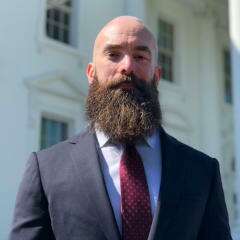
Right Now
I help boards and executives at technology companies continue (or resume) rapid acceleration by advising them on improving their leadership capabilities, operations, and technology. While I specialize in executive advising on leadership and process, I can also dive into deep technical problems with Data Science or Software Engineering departments. Feel free to contact me directly to learn more.
I have a few tech projects in progress that will undoubtedly become blog posts. I’m working on an e-book about leadership in organizations, as well as a field manual for triaging performance and architecture in growth-stage startups. I sometimes write code for open-source projects like TinySite and CompressTest. I also work on ApplyByAPI, a tool that helps companies focus on quality over quantity in their tech hiring process.
Recent Publications
Are your Functions Total?
In recent years, and for a variety of reasons, functional programming has become an increasingly popular topic. Languages like Haskell, Scala, Clojure, and others, have had huge gains in popularity and consequently there have been many large-scale projects written in some of these languages. There has also been increasing pressure to move programming more towards the rigor of mathematics, something which I strongly support. One thing which could get more attention in the context of functional programming is the concept of Total Functional Programming, which uses the concepts of total functions combined with specific types of recursion in order to guarantee that all your programs terminate. Astute readers will note that this means, since the Halting Problem is not decidable over Turing machines, that a Total Functional Programming language is not Turing Complete. In practical use, this is not an undesirable property and in fact systems written in Turing complete languages are often restricted to be Turing incomplete by, for example, adding termination conditions to programs so that they do not run indefinitely. If you’ve ever been working on some kind of numerical program and added something like if loopCounter > limit then return in order to stop a loop which has sufficiently converged, you have done exactly this. ... read moreHooked: How to Build Habit-Forming Products
I recently finished a book called Hooked: How to Build Habit-Forming Products by Nir Eyal. The book overall expresses a nice framework for considering products and services, whether or not they should be habit-forming in the first place, and if so how to go about making that happen. The framework is very useful in that it allows for organizations to have a common language they can use to speak about their product and how they should modify or improve it. Below are my notes on a per-chapter basis, and I may follow this with another post summarizing my thoughts on the book and considerations for companies who need to add recurring users, reduce churn, and other common things. ... read moreA Quick Overview on the Kaggle Competition for Avito
Introduction I didn’t have much time for this competition, so didn’t invest much into feature engineering, creating ensembles or other things. As I participated in the Avazu competition as well, which included the use of tinrtgu’s now-famous code, I decided to use the same approach here. Background The overall goal of the competition is to analyze user behavior in order to generate a model for recommending ads to be shown in front of users, with the success metric being whether or not the user clicks on the ad. There is already a lot of work on this topic, so there is no need to rebuild everything from scratch. ... read moreTransitioning to a Data-Driven Organization
Introduction I gave a talk at the CDO Summit in Singapore on 18 June and thought it may be worthwhile to address some of the points and provide additional detail on the slides I used. Sections below are listed by slide content and provide extra explanation. Kardashev Scale This is simply applying the Kardashev Scale of technological advancement to the advancement of data usage in organizations. For more detail see the article I wrote on the Kardashev Scale of Data Maturity. ... read more